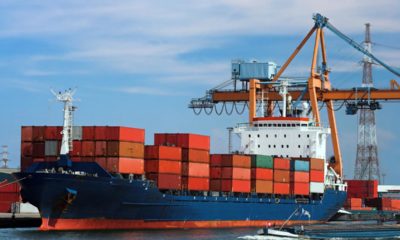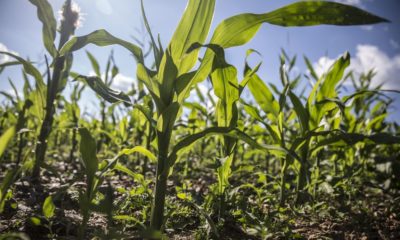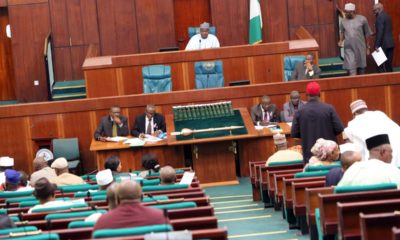Markets
Cotton Should be Seen as National Asset, Says Achimogu
Published
8 years agoon

- Cotton Should be Seen as National Asset
President of the National Cotton Association of Nigeria (NACOTAN), Mr. Anibe Achimogu, spoke on the dwindling fortune of cotton, poor mobilisation of farmers and lack of commitment by stakeholders, which has allowed neighbouring countries to dominate the market to the detriment of Nigeria.
Nigeria was one of the top cotton producing countries, but it has over the years lost its place. What is responsible for the backward slide of the sector today?
There are many factors responsible for that. Mainly, it has to do with lack of research and investment. One of the most important things to keep cotton production going in our country is planting seeds. Unfortunately, we have not invested in that over the years. The institute mandated by the Federal Government to produce breeder foundation seeds is the Institute for Agricultural Research (IAR) in Zaria. Unfortunately, that Institute is not funded enough. They don’t have enough breeders; they don’t have the right equipment and so on. But I would like to say that the planting seed priority that they have, their intrinsic values per quality is quite good and if they are supported, I am sure they can produce and the impact will be felt in terms of yields. I think that is the first challenge.
The second challenge is inability to meet the needs of farmers. When I say the needs, I am talking specifically about the inputs. The point is that Agriculture is time bound generally. You see, cotton particularly has specific windows for planting. So, if they don’t have the right inputs at the right time, definitely that will affect the cotton yields expectation. In fact, this is the reason why cotton production is dwindling in the country today. There are other challenges in the sector, which we believe, once addressed will lead to higher demand of cotton in the country.
The cotton producing states cannot meet the local demand for the product, not to talk about meeting export needs. How bad is this?
That is exactly what I am saying. It has to do with the planting seeds. For instance, in the last planting season of 2016, we as an association mobilised 68,000 farmers that will be engaged, but we still didn’t have enough planting seeds that will go round the farmers. Even the existing or current states that are producing cotton were not able to reach their optimal capacity to produce cotton because not all the farmers are cultivating the produce. Those that even have the seeds have poor quality seeds, so the yields are low and also like I said if you don’t support these farmers at the right time, give them the inputs to prepare their farmlands and also produce, there wont be any result. All these affect cotton production in Nigeria, in terms of quantity and quality.
Yes, we have 25 cotton producing states; perhaps in this season we only had 10 or 16 that only planted. Even then, like Zamfara State and others states that have maybe 14,000 farmers for instance, perhaps only 1,000 or 3,000 farmers were mobilised to farm. So, this is a direct negative effect on cotton production in the country.
In what ways can government ensure massive production of cotton?
You see, I am now pushing government to recognise the activities of National Cotton Association of Nigeria, which is primarily set up to promote cotton production, to support the farmers and all that. Now, we have a plan we have put forward. Like I said, and what I want government to do for us as cotton farmers is to link us, and perhaps give us a special status as they’ve done to rice farmers under the Anchor Borrowers programme. I think it is still the best programme for Agriculture. Like I said, if you go under the anchor-borrowers programme, for instance, they are faced with two major issues concerning the farmers. The first is market, because you have an anchor company that must be on stand-by that will obtain all that the farmers produce.
Then, the second major problem for farmers again is the price that is determined by the anchor companies and even Central Bank Nigeria (CBN) is involved and the participating banks. So, on that price issue, the farmers know what is involved and even before they plant the cotton. Anchor-borrower programme is a good programme, in the past when you give inputs to farmers and sometimes they start selling and engage in diversion and so on, but now that has ceased. Right now, if I as a Ginner get my raw material as real cotton, I process it, obviously there would be raw materials for textiles companies and that would be available for them, which is the cotton needs. For me, I want government to see cotton, first and foremost or treat cotton as an essential product for the nation.
You see, anywhere cotton is produced in the world, it is taken as a national asset. That is why in neighbouring countries, their governments control the production and supply of cotton jealously. They don’t joke with it. They take cotton as we take oil in this country. So, it needs to be seen as a national asset and given a special status it deserves, such as what they gave rice under the anchor-borrower’s programme. After all, cotton is still part of the aims and objectives of the anchor-borrowers programme. And we that are in the Association and stakeholders in the industry need to be guided and supported in order to grow the industry, if we do what government wants us to do in terms of positioning our farmers, grouping them and all that. We are ready to do that, and once we come to government and those funds needed are made available for us, the sky will be the limit for the increase in production of cotton in our country.
The problem we are facing is the delay in payment and inputs supply. If you don’t release the funds that we all agreed on to be released to farmers, stage by stage and you don’t release it on time, then indirectly it will affect the work on the farms. That is why we are saying that the Association is in the best position to guide the anchor-borrower’s programme for cotton production.
To what extent do cotton farmers access funds presently from government?
Right now, it is zero percent. Access to finance by farmers is difficult today. If you go to the commercial banks, everybody is talking about collateral. That is why again, I will go back to say that the anchor-borrowers programme is the best, because that gives farmers access to funds. In this sense, finance and assistance will be given directly to them. The only difference is that the only cash that comes to the farmers, which he needs as his own labour is estimated, but every other thing is disbursed as inputs. For instance, if the farmer needs fertilizers and tractors, as the case may be for his farm, the companies would be paid directly.
Is the CEO and Founder of Investors King Limited. He is a seasoned foreign exchange research analyst and a published author on Yahoo Finance, Business Insider, Nasdaq, Entrepreneur.com, Investorplace, and other prominent platforms. With over two decades of experience in global financial markets, Olukoya is well-recognized in the industry.

You may like
-
Trump’s 14% Tariff on Nigerian Imports Raises Fresh Concerns for Trade and Economic Stability
-
Nigeria Secures $1.08 Billion World Bank Support to Boost Education and Combat Malnutrition
-
Trump Declares Economic Emergency Introduces Tariffs on Nigerian Exports
-
Nigeria, Brazil Partner on $1.1bn Agricultural Revolution Plan
-
Nigeria Considers Creation of 31 New States Despite Economic Challenges
-
Visa Denial Sparks Airport Drama as Kenya Airways Defends Staff













